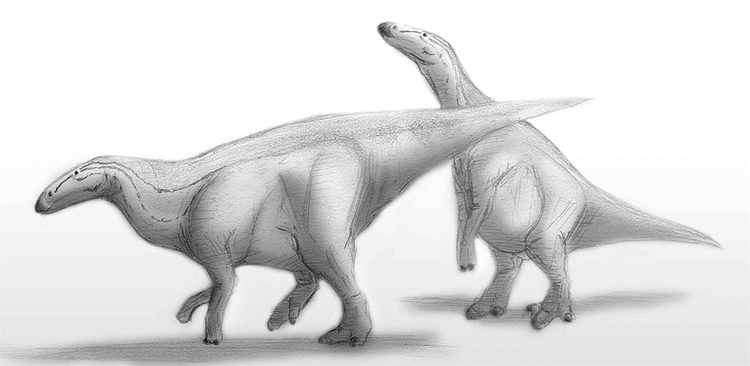

With a mass of 5000 kilograms, the eastern galumph (Galumphia hebes) is the smallest of the megahadrines, but is the largest animal in the deciduous forests of eastern North America that are the creatures' home.Despite their name, galumphs are actually quite agile, and can move with surprising speed when threatened, their latterally compressed bodies easily slipping between the trees. Galumphs feed upon forest undergrowth, shrubs, and saplings, its batteries of diamond-shaped teeth mashing even the ubiquitous p-Rubus brambles into a digestable paste.
A galumph's physiology is very similar to that of its Mesozoic ansestors, with reletively weak hind legs, and a center of balance close to the hips. Galumphs never developed the enlarged neural arches over the shoulders (a common feature of many modern quadripedal herbivores) and will often rear onto thier hind legs to reach succulent branches.